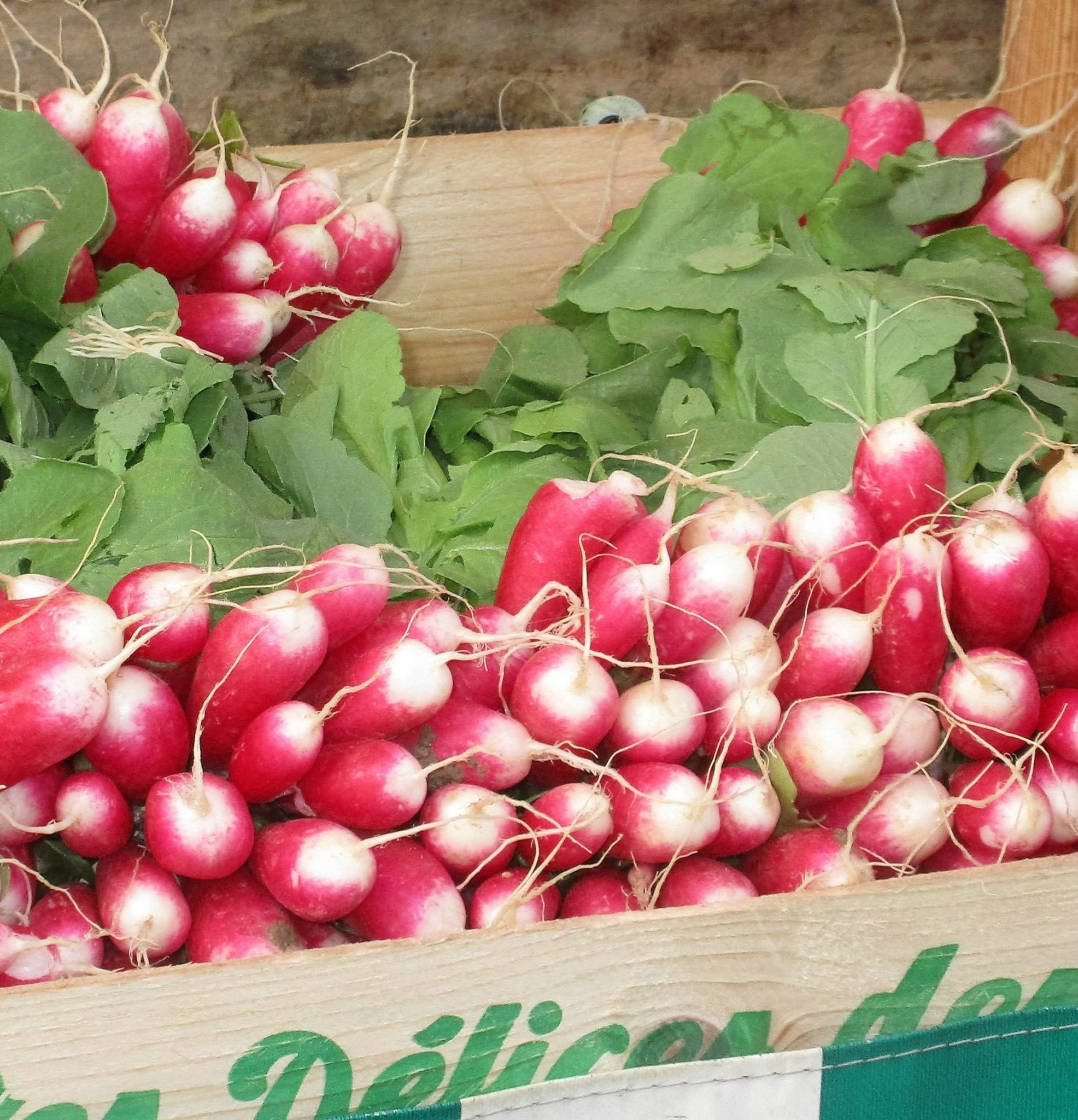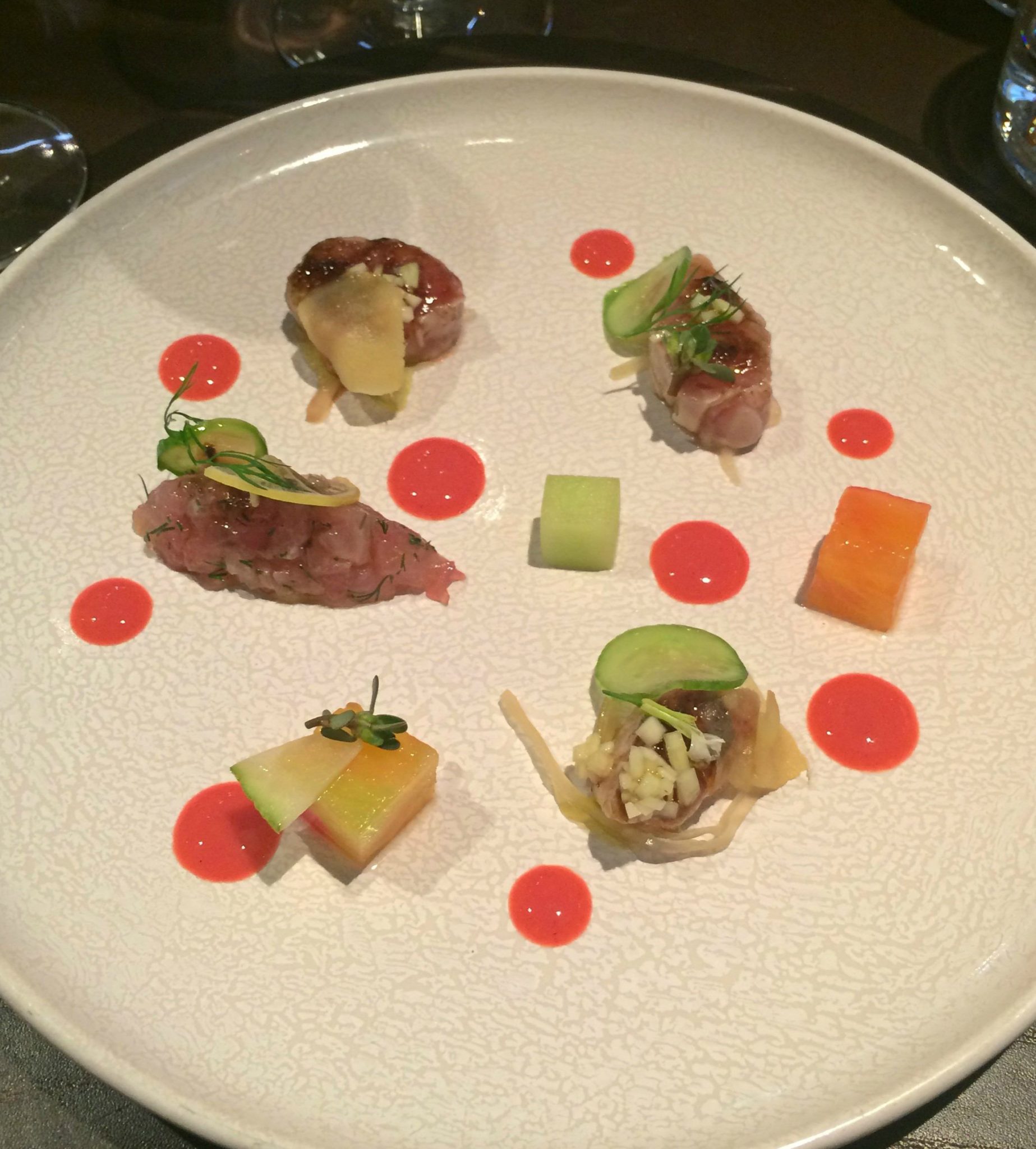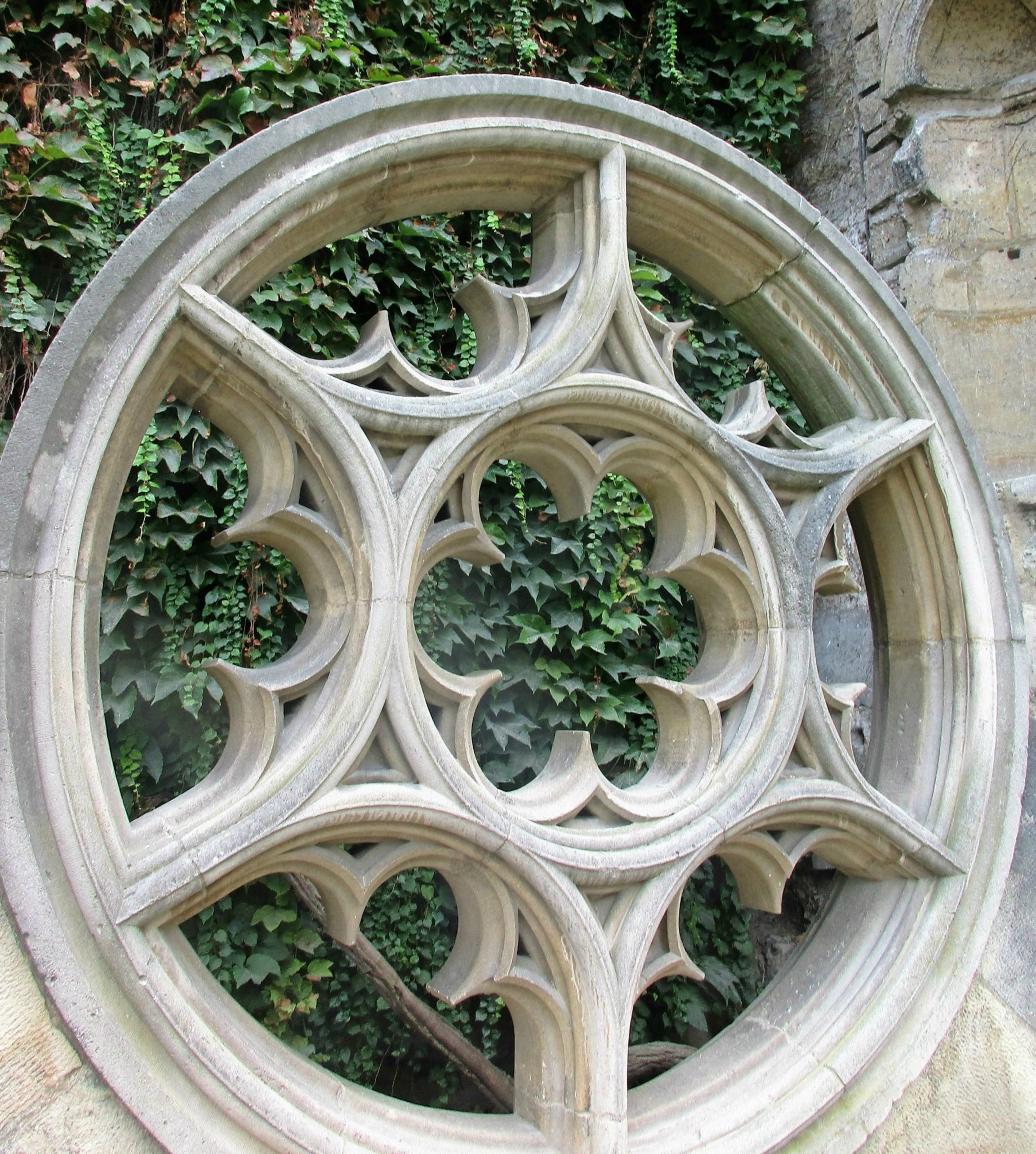 One year after terrorists killed 130 people at multiple targets in Paris last November, armed soldiers still patrol the streets and tourism has yet to regain full strength. But despite the scars from that night, Paris remains one of the world’s most enchanting destinations for both first-timers and nostalgic returnees. Contributing writer Lynn Langway found this city more magical than ever on her recent return, when she and her husband stayed for a week in a rental apartment.
One year after terrorists killed 130 people at multiple targets in Paris last November, armed soldiers still patrol the streets and tourism has yet to regain full strength. But despite the scars from that night, Paris remains one of the world’s most enchanting destinations for both first-timers and nostalgic returnees. Contributing writer Lynn Langway found this city more magical than ever on her recent return, when she and her husband stayed for a week in a rental apartment.
The minute we heard about the bloodshed in Paris, we knew that we had to go back. My husband and I had been talking about revisiting one of our favorite cities to celebrate our anniversary the following fall, and the terrorists made up our minds. We wanted to show our support. The decision was not difficult or fearsome; as longtime New Yorkers, we’d watched our own city weather 9/11, and we knew that terrorism can strike anywhere, any time.
 Seeking to experience more everyday life than we might in a hotel, we booked an appealing Airbnb online in the old Jewish quarter of the Marais (on the right bank of the Seine), close to museums, shops, and restaurants. We knew that we’d made the right choice soon after we arrived, when we strolled through the uncrowded Sunday morning streets to the Picasso Museum—and had it virtually to ourselves for a while. Beguiled by the gargoyles at the museum’s rooftop café, we lingered over our café au laits as church bells chorused the call to Sunday worship. Although we already cherished Paris, at that point we fell helplessly in love.
Seeking to experience more everyday life than we might in a hotel, we booked an appealing Airbnb online in the old Jewish quarter of the Marais (on the right bank of the Seine), close to museums, shops, and restaurants. We knew that we’d made the right choice soon after we arrived, when we strolled through the uncrowded Sunday morning streets to the Picasso Museum—and had it virtually to ourselves for a while. Beguiled by the gargoyles at the museum’s rooftop café, we lingered over our café au laits as church bells chorused the call to Sunday worship. Although we already cherished Paris, at that point we fell helplessly in love.
The city seemed different to me on my seventh visit since childhood. Parisians seemed friendlier than ever, more patient with a traveler’s rusty French. True, their warm welcome may be due, in part, to the decline in tourism. Restaurant reservations were easier to come by than before the attack, and while we bought an advance pass so we could skip museum lines, we never needed it in late September. The patrolling paratroopers were noticeable, especially near tourist magnets like Notre Dame, but they appeared to be both relaxed and reassuring—perhaps because they looked so sadly familiar from terrorism alerts at home.
 Our sixth-floor apartment combined Old World charm, modern plumbing, and an elevator that actually worked. Big casement windows in every room framed knockout views of the rooftops clear to the Sacré-Cœur, roughly four miles away. With everything nearby, we spent blissful hours every day shopping like Parisians, wandering the winding streets of the fourth arrondissement and beyond, stopping at the fromagerie for creamy yogurt and pungent cheeses, the greengrocer for rosy pears, and the bakery for crusty baguettes. We walked about seven miles a day, pausing to picnic on savory falafel sandwiches amid the Renaissance pillars of the Square Georges Cain, one of many little parks that dot the neighborhood, and sipped fresh citron pressé (lemonade) at the Café Hugo in the glorious 17th century Place des Vosges. The boutiquification that has overtaken other chic neighborhoods like New York’s West Village was definitely visible in the Marais, where Chanel, Helmut Lang, and other luxury labels have shiny new nests. Yet we were heartened to see that real local flavors—Jewish delis, Hebrew schools, and exuberant wedding celebrations—persist.
Our sixth-floor apartment combined Old World charm, modern plumbing, and an elevator that actually worked. Big casement windows in every room framed knockout views of the rooftops clear to the Sacré-Cœur, roughly four miles away. With everything nearby, we spent blissful hours every day shopping like Parisians, wandering the winding streets of the fourth arrondissement and beyond, stopping at the fromagerie for creamy yogurt and pungent cheeses, the greengrocer for rosy pears, and the bakery for crusty baguettes. We walked about seven miles a day, pausing to picnic on savory falafel sandwiches amid the Renaissance pillars of the Square Georges Cain, one of many little parks that dot the neighborhood, and sipped fresh citron pressé (lemonade) at the Café Hugo in the glorious 17th century Place des Vosges. The boutiquification that has overtaken other chic neighborhoods like New York’s West Village was definitely visible in the Marais, where Chanel, Helmut Lang, and other luxury labels have shiny new nests. Yet we were heartened to see that real local flavors—Jewish delis, Hebrew schools, and exuberant wedding celebrations—persist.
On previous trips to Paris, we squeezed in so many must-sees that we lacked the time for leisurely pursuits. We signed up for a memorable four-hour foray into shopping, cooking, and eating with La Cuisine Paris, a culinary school that offers classes for English-speakers of varying expertise. Chef Lise Kvan, a cheerful young sylph from Virginia who has cooked in top Paris restaurants, took us in tow as she coaxed prize produce from the merchants at the outdoor Marché Maubert on the Left Bank. We and six fellow foodies from the U.S., UK, and Canada then followed her back across the Seine to La Cuisine’s airy kitchen and riverfront dining room. After about two hours of peeling, chopping and stirring, we’d transformed the ingredients—with more than a little help from Chef—into a five-course lunch. The menu: white-tipped French radishes with sweet butter, poached whiting with beurre noisette, roast pork stuffed with figs and sauced with red wine and Mirabelle plums, a three-cheese course, and a luscious pear tart—accompanied, naturellement, by a glass or two of crisp Sauvignon Cotes de Duras.
 We meant to make more use of the gleaming kitchen at our rental apartment, but other options were just too tempting. At the sleek Michelin one-star Ze Kitchen Galerie on the Left Bank, we were dazzled by an elegant meal, starting with small squares of bonito, sauced with strawberry and pepper and arrayed like jewels, and finishing with superb white chocolate-wasabi ice cream. Less formal, but even more exciting was dinner at Les Enfants Rouges in the Marais, the very model of the tiny bistro we’ve always sought: ten tables, friendly staff, and well-priced wine and food. The inventive chef is Japanese, and he infused French dishes with Asian notes: tender cabbage stuffed with lamb and spiced with coriander, Mirabelles poached in Darjeeling tea. We also feasted on sardine beignets at the trendy Clown Bar, devoured smoked salmon crepes at the Breton Café, Breizh, and slurped Normandy oysters at the atmospheric Le Bar A Huitres.
We meant to make more use of the gleaming kitchen at our rental apartment, but other options were just too tempting. At the sleek Michelin one-star Ze Kitchen Galerie on the Left Bank, we were dazzled by an elegant meal, starting with small squares of bonito, sauced with strawberry and pepper and arrayed like jewels, and finishing with superb white chocolate-wasabi ice cream. Less formal, but even more exciting was dinner at Les Enfants Rouges in the Marais, the very model of the tiny bistro we’ve always sought: ten tables, friendly staff, and well-priced wine and food. The inventive chef is Japanese, and he infused French dishes with Asian notes: tender cabbage stuffed with lamb and spiced with coriander, Mirabelles poached in Darjeeling tea. We also feasted on sardine beignets at the trendy Clown Bar, devoured smoked salmon crepes at the Breton Café, Breizh, and slurped Normandy oysters at the atmospheric Le Bar A Huitres.
 When we did put down our forks, we immersed ourselves in museums, trying to look beyond the masterpieces. At the magnificent d’Orsay, housed in a former Belle Époque train station, we admired the curvy Art Deco furniture as well as the Manets and Monets. The views from the top of the Pompidou center were as extraordinary as we recalled from its opening days, and so was its colorful inside-out construction, but we were captivated by a collection of cheeky protest art from the former Soviet Union, including a “Last Supper” table of 13 plates set with hammers and sickles. Our favorite museum of all may have been the renovated Picasso, which glowed in its 17th century mansion, with vaulted ceilings and ancient beams showcasing 400 works by the master, along with those he collected. Way out in the Bois de Boulogne, the Louis Vuitton Foundation was between exhibits when we were there. But the striking Frank Gehry building, with its billowing sails of glass, had been turned into its own exhilarating artwork, temporarily bedecked in bold blue, green, and red diamonds by a French artist .
When we did put down our forks, we immersed ourselves in museums, trying to look beyond the masterpieces. At the magnificent d’Orsay, housed in a former Belle Époque train station, we admired the curvy Art Deco furniture as well as the Manets and Monets. The views from the top of the Pompidou center were as extraordinary as we recalled from its opening days, and so was its colorful inside-out construction, but we were captivated by a collection of cheeky protest art from the former Soviet Union, including a “Last Supper” table of 13 plates set with hammers and sickles. Our favorite museum of all may have been the renovated Picasso, which glowed in its 17th century mansion, with vaulted ceilings and ancient beams showcasing 400 works by the master, along with those he collected. Way out in the Bois de Boulogne, the Louis Vuitton Foundation was between exhibits when we were there. But the striking Frank Gehry building, with its billowing sails of glass, had been turned into its own exhilarating artwork, temporarily bedecked in bold blue, green, and red diamonds by a French artist .
 Midweek, we took the Metro— much cleaner and more navigable than before—to the Canal Saint Martin neighborhood, where the terrorists did their worst. The mounds of flowers have been cleared from the cafes and bars that were shot up and bombed, and some have quietly reopened; the Bataclan Theatre, where 90 died, was due to reopen November 12 with a concert by Sting. “We do not need memorials to remember,” said the waiter in a Thai restaurant near those that were attacked. “We will never forget.”
Midweek, we took the Metro— much cleaner and more navigable than before—to the Canal Saint Martin neighborhood, where the terrorists did their worst. The mounds of flowers have been cleared from the cafes and bars that were shot up and bombed, and some have quietly reopened; the Bataclan Theatre, where 90 died, was due to reopen November 12 with a concert by Sting. “We do not need memorials to remember,” said the waiter in a Thai restaurant near those that were attacked. “We will never forget.”
As our Parisian sojourn ended, we made a pilgrimage to Berthillon, the temple of ice cream on the Ile St. Louis, in the center of the Seine. Slowly licking our pistachio-studded cones as we recrossed the bridge, we watched the lights limn Notre Dame. As we paused before a sight that never gets old, a fiddler struck up a Celtic lament. I saw a soldier give smiling directions to a befuddled young tourist. In that moment, Paris felt perfectly at peace. We left the next day with two certainties: this city will endure, and we will be back.
To learn more about destinations Lynn Langway has visited, check out:
- Finding Your Own Southeast Asia
- Returning to Havana, Cuba 57 Years Later
- Having a Contrarian Christmas in Las Vegas
Text and Images by Lynn Langway for PeterGreenberg.com












